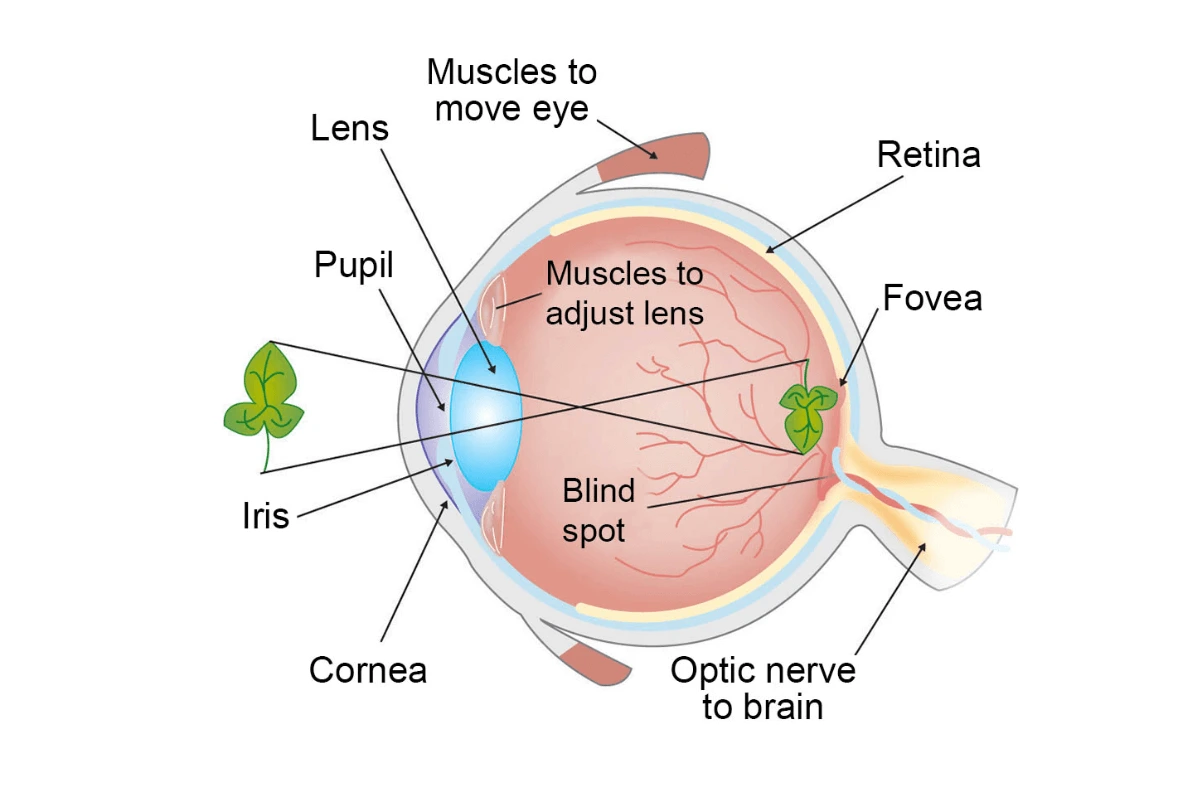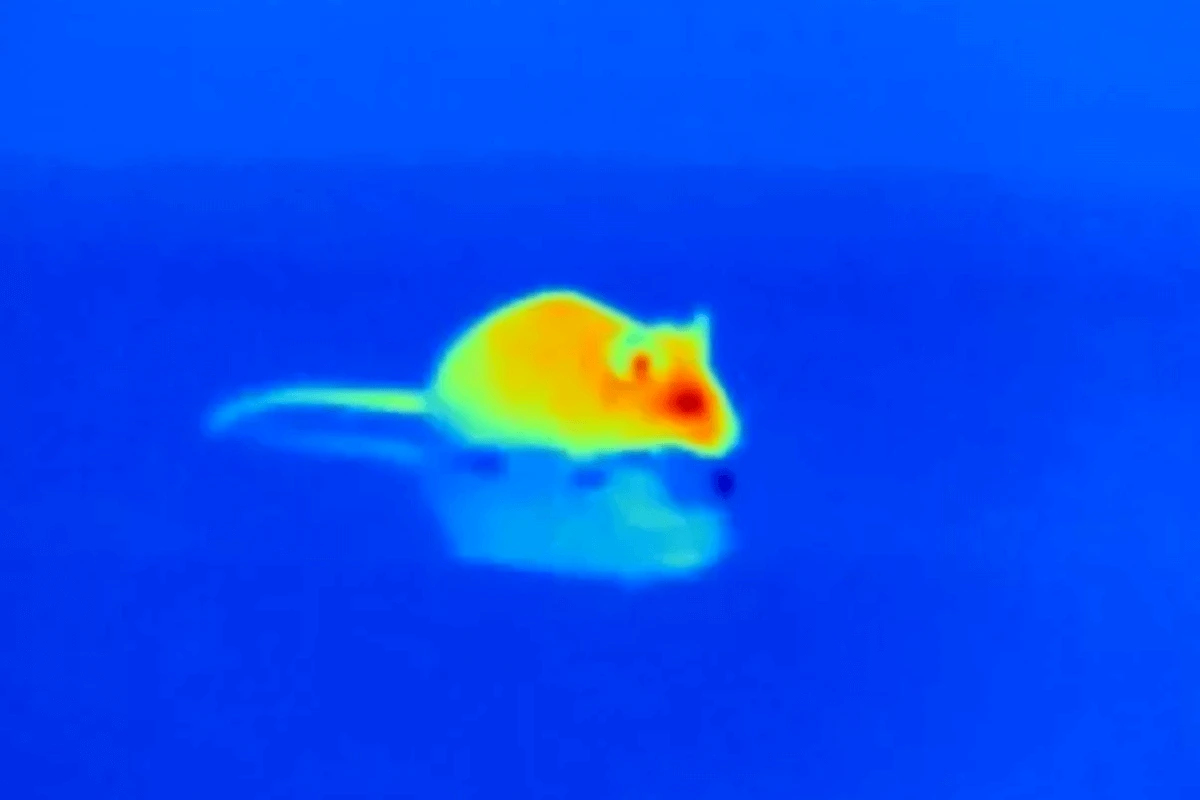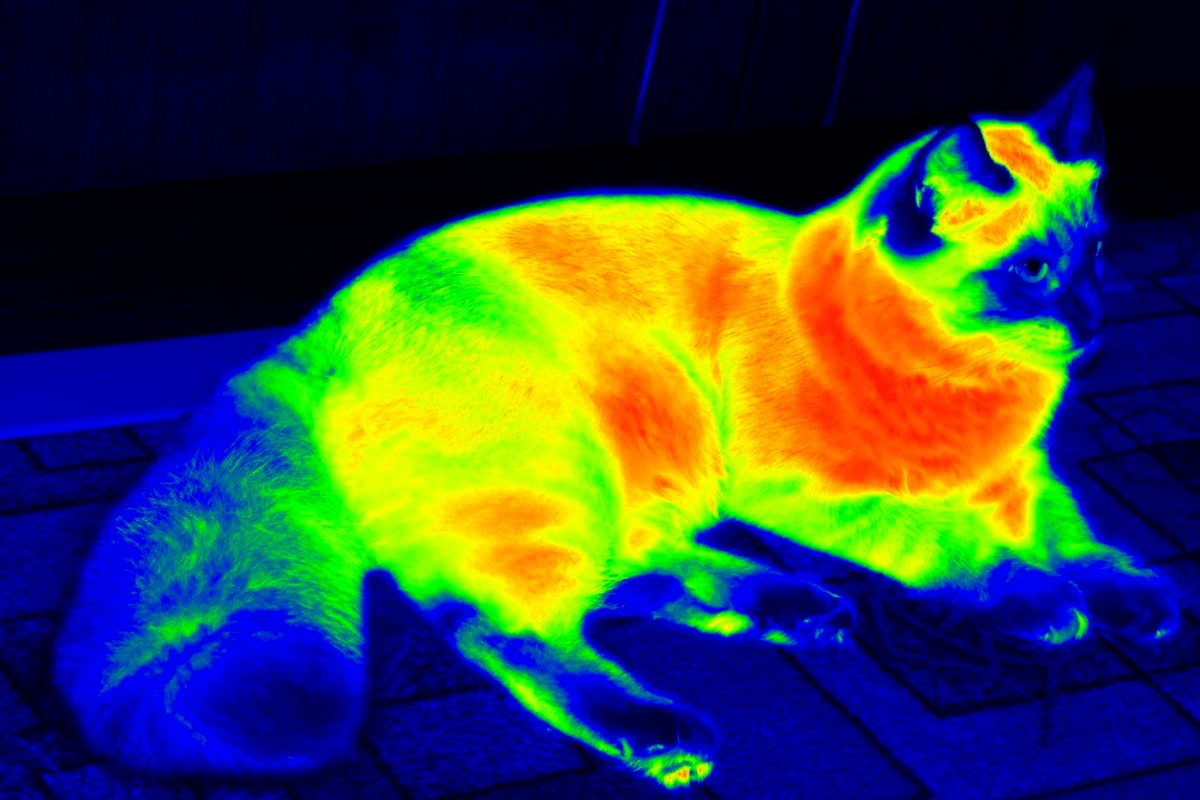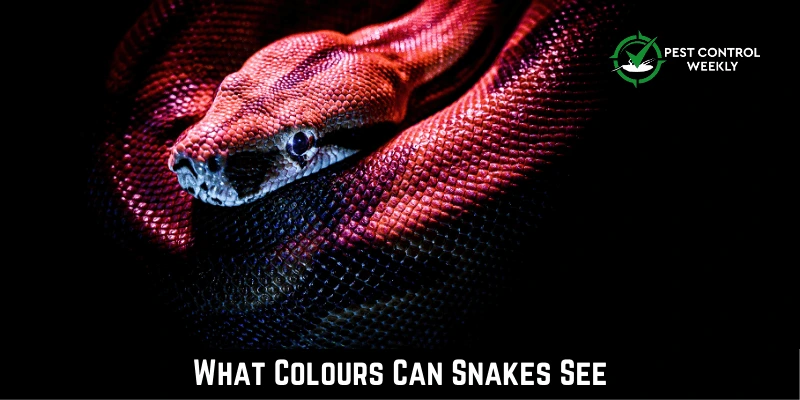In a world of mystery snakes, their vision stands as an interesting secret. When you observe a snake moving in the dark or the light, do you ever wonder what colors can snakes see?
Recent research has shown that snakes may be able to see some colors. However, most of what they see is grayscale. Surprisingly, some species seem to be sensitive to shorter wavelengths and can see subtle blues and greens in their surroundings.
In this article, let’s explore the secrets of these quiet predators’ unique vision to challenge what we think and deepen our knowledge of their fascinating world.
Snake Vision
In the vast and strange world of nature, the snake clan’s way of seeing has always been a mystery. According to their sophisticated visual system, Snakes have a unique perspective on the world.
Snakes don’t have eyes that are sensitive to how bright the light is like ours are. Instead, their eyes are designed for dim, nocturnal light, which helps them see movement and heat more clearly. These sneaky predators have a special kind of thermal sensing that gives them an extra sensory input that is truly amazing. The pit viper is a famous example because of its better hunting skills, thanks to its highly developed heat-sensing pit organs.
Their eyesight may not be as good as ours. But that has nothing to do with their brains. Structures in their eyes allow them to detect tiny changes in brightness, allowing them to interpret the environment in shades of grey. As a result, they cannot see the full range of colors that enrich our vision.
While it has long been thought that animals are colorblind, current research suggests that some species may be able to distinguish certain colors, particularly blues, and greens, suggesting a primitive type of color vision.
Basic Anatomy of a Snake’s Eye

Image Credit: allyouneedisbiology
A snake’s eye is a wonder of biological science, improved for survival, and an integral part of the snake. The protective, fixed, and clear scale, called the brille or spectacle, protects the eye from dust and damage and helps keep moisture in the eye. The snake never closes its eyes in sleep, so it always seems to be staring carefully at the world around it.
The clear, oval pupil, is different for each species. It responds to changes in light by getting bigger when it’s dark and getting smaller when it’s bright, which helps the animal see best. Behind this view into the world of snakes is a crystalline lens that is always in focus. This gives the user better vision in the far distance.
Some snakes have pit organs, which are thermoreceptive channels that give them an advanced sense of heat. This helps them find warm-blooded prey, even in the dark, by adding to their vision.
The Role Of Rods And Cones In Vision

Credit Image: Arizona State University
The rods and cones in an animal’s eye work together in a complex manner to give the animal good vision. Photoreceptor cells in the retina turn light into electrochemical signals that the brain understands.
Rods are very good at seeing in low light because they are very sensitive. This makes it possible for nocturnal and sleeping species to move around in the dark regions under the moonlight. Their main job is to sense how bright the light is and how fast it moves. This creates a grey world where color is not present.
However, cones protect color and detail and work best in bright environments. Many cones make seeing a rainbow of colors possible, giving life a brightness that can only be seen in daylight. Short-wavelength cones (blue, green, and red) are more sensitive than longer-wavelength (infrared) cones.
The way our rods and cones work together shapes how we see, painting the picture of reality as we see it. Even though rods are more common in snakes, the presence and function of cones keep attracting scientific interest.
Understanding Colour Perception in Snakes
Snakes’ color sense is unlike humans’. The large number of light-sensitive rod cells in snakes’ retinas supports the generally accepted view that snakes, like many other nocturnal species, see mainly shades of grey.
But new scientific findings show a changing story. New data suggests that some snake species have a simple form of color vision. It has been found that some snake retinas include a small number of cones, the photoreceptor cells responsible for processing color. These results show that they can tell the difference between some colors, especially blues and greens. This could give them a strategic advantage, allowing them to spot better prey or predators among the greenery of their natural habitat.
Even with these interesting discoveries, snakes’ ability to see colors is still a mystery that needs more research. It’s a clear example of how different and complicated nature’s designs are, with each one perfectly fitting the needs of the person who sees it.
The Evolutionary Reasons Behind Snakes’ Vision
- Snakes are mostly active at night, so they have developed eyes that work best in low light.
- Their rod cells, which are abundant and sensitive to light and motion, provide them an advantage in their nocturnal hunting adventures.
- Pupil sizes and shapes in snakes range from vertical slits to circular openings, showing the flexibility of snakes’ evolutionary origins. The diversity aids snakes’ ability to adjust to varying light intensity in pupil shape.
- Some snakes have developed specialized pit organs for detecting heat, giving them a new way to see.
- They are strong nighttime predators because of their ability to locate warm-blooded prey through thermoception.
- Snakes don’t have eyelids. Instead, they have a clear scale that protects their eyes and keeps them from drying out. They need this adaptation to survive in severe conditions.
- Some snakes have cone cells, suggesting an evolutionary bias towards color vision. This color vision may aid in identifying prey and predators, increasing their chances of surviving in a wide variety of habitats.
The Impact of Light Conditions on Snake Vision
Snakes see the world differently depending on light conditions. Their eyesight isn’t as sharp as a human’s. But it’s well adapted to the conditions in which they live. Snakes are well-adapted to the dusk and dawn hours because their eyes have adapted to see in low light.
They have a lot of rod cells, which are light-sensitive photoreceptors. This makes them good at finding their way in dim light and able to track the smallest movements of possible prey with precise clarity.
The pupil is an oval mystery that changes from species to species. It can get bigger or smaller in response to changes in light intensity. This protects the retinal photoreceptors from being damaged by light and improves visual input.
Some animals have a refined sensory dimension that is unaffected by light conditions; this is the case with their heat-sensing ability. However, their natural leaning towards low-light conditions may cause their vision to suffer under bright light.
Difference Between Snakes and Human Vision
| Human Vision | Snake Vision | |
| Eyelids | Humans have movable eyelids, allowing them to blink and moisten their eyes. | Snakes lack movable eyelids. Instead, they have a clear protective scale, known as the brille. |
| Pupil Shape | Most humans have round pupils. | The shape of a snake’s pupil can vary between species, ranging from round to vertical slits. |
| Colour Perception | Humans have trichromatic vision, meaning they see a wide spectrum of colors thanks to the three types of cone cells in their retinas. | Many snakes see in shades of grey due to a predominance of rod cells. However, some species may perceive limited colors, mostly blues, and greens. |
| Light Sensitivity | Humans are diurnal creatures with vision optimized for well-lit conditions. | Snakes are mainly crepuscular and nocturnal. Their eyes adapted to perform in low-light environments. |
| Distance Focus | Humans can focus on objects at varying distances by changing the shape of their lenses. | Snakes have a fixed lens focus, which is better suited for detecting movement and far-field vision. |
| Heat Perception | Humans cannot perceive heat through their eyes. | Some snake species have pit organs, allowing them to detect heat, aiding them in hunting warm-blooded prey. |
Night Vision in Snakes
Snakes’ strong sense of smell and hearing come into their own in night’s dark, dim world. Evolution has created a rich web of changes in their eyes, making them good at finding their way at night. They have a lot of rod cells, which are photoreceptors that are especially sensitive to light and motion so that they can see even in low light.
Their pupils, which are either round or elliptical depending on the species, can dilate extremely widely to take in every speck of light. The world they see is made up of shades of grey and echoes of moves and shapes.
However, their ability to see in the cold is where they excel at night. Some animals have developed pit organs, which are very sensitive thermal detectors that work with their eyes to help them locate prey in the dark. As a result, snakes, with their amazing night vision, rule the dark.
How Snakes Adapt to Various Lighting Conditions?
- As snakes are typically nocturnal or crepuscular, they have developed a vision system with a high concentration of rod cells. Due to the high sensitivity of these photoreceptors to both light and motion, they can find their way in low-light conditions.
- The snake’s pupil is variable in size and shape, frequently appearing as a strange ellipse. This change helps control how much light gets in, keeping your vision at its best no matter how bright it is.
- Some snakes can detect heat with special pit organs. These organs detect heat independently of light and are thus important for locating warm-blooded prey in the dark of night.
- A transparent scale protects the snake’s eye called a brille, which can withstand varying levels of brightness. This protects the eyes from dryness and overexposure to light.
- New evidence suggests that some snake species may have a low amount of cones, the photoreceptors needed to see colors. This suggests the ability to distinguish various colors, which could be useful under different lighting settings.
How Do Snakes See the World?

Image Credit: Quora
A snake’s view of the world differs greatly from a human’s. Snakes are mostly nocturnal or crepuscular, which means they are used to being in low-light conditions. Their retinas have a lot of rod cells. They are light- and motion-sensitive photoreceptors that make their world look grey. They see a black-and-white world that is full of movement.
In low light, their elliptical-shaped pupils dilate to increase the amount of light entering the eye. Some snakes have specialized pit organs that further enhance their vision. These thermoreceptive sensors can pick up on heat, which gives them an extra point of view that isn’t based on light.
How Do Snakes See Humans?

Image Credit: Pinterest
When a snake looks at a person, it doesn’t see the details we might think it does. Because snakes can only see in motion and heat, we seem to them as huge, toasty things that give off a lot of heat. They cannot perceive faces with the same degree of accuracy that we are used to.
But sudden moves or changes in heat patterns can wake them up, causing them to become defensive or hunt. Some snake species might be able to tell general color patterns apart because they have cone cells. Scientists are still looking into this part of snake vision, though. In this way, the human figure is a complicated mixture of heat signatures and moving shadows in the snake’s eyes.
Different Colors Snakes can see
Researchers have been interested in how snakes see colors for a long time, leading to some interesting discoveries. It’s widely believed that snakes have a higher concentration of rod cells in their retinas, so they can only see in shades of grey. However new information suggests that this idea may need to be simplified.
It has been discovered that some snake species have cone cells, the photoreceptors used to see colors. Since these cones are especially sensitive to blue and maybe green light, snakes may be able to differentiate between these colors. This vision change may help in dense forests where it’s difficult to spot prey or danger.
Longer wavelength colors like reds and oranges are harder to spot. So, the snake’s world isn’t completely colorless, but it’s very different from how we humans see it.
Even with these interesting discoveries, snake color vision’s exact range and depth are still unclear. This calls for more scientific research to fully understand this part of how snakes see.
What Colors Snakes Can Not See?
We know snakes see a very different world, but how well they can see colors is still a mystery. Snakes have a high concentration of rod cells, the kind of retinal photoreceptor responsible for monochrome vision. Some species have fewer cones, the cells responsible for color vision, and are more sensitive to light of shorter wavelengths.
This means that snakes may be able to distinguish between blue and green, but they probably can’t see the rest of the color spectrum. The snake is thought not to see the red, orange, and certain yellow shades that match longer wavelengths. In the snake’s monochrome vision, the vibrant warmth of colors like the red of a ripe apple or the orange of an autumn leaf would be lost.
Final Thoughts
In the amazing world of snakes, their unique way of seeing is an interesting story of evolution and change. Even though their world may not have as many bright colors as ours, it is full of different kinds of light, motion, and heat. Their predatory nature goes well with their vision, which is a beautiful mix of rod-based monochrome vision and thermal sense.
Even though we don’t know everything there is to know about snakes. Each new scientific discovery gets us one step closer. This makes us admire these captivating animals and the amazing ways they have adapted even more.
